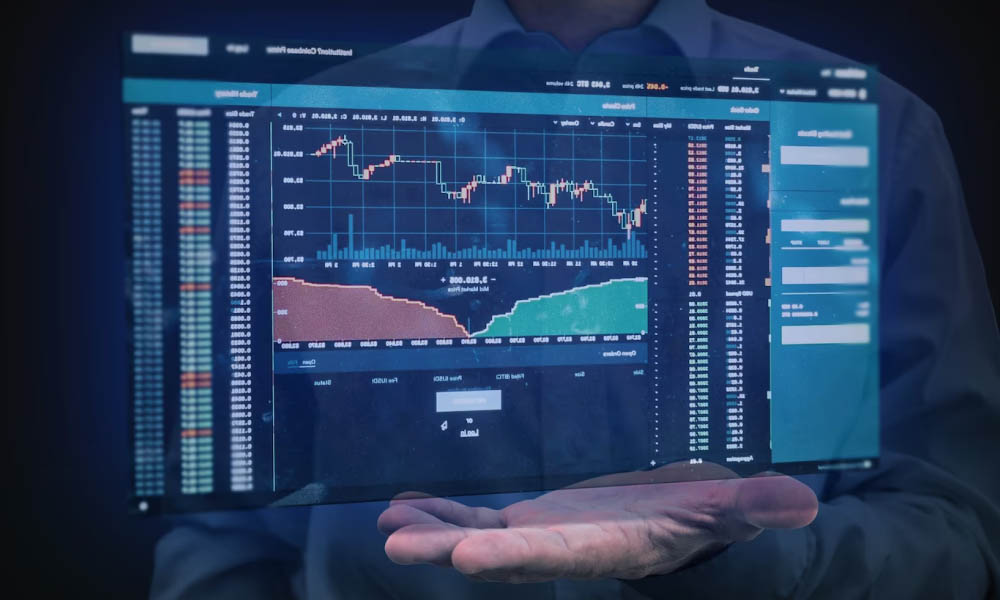Crypto Trading Trends Navigating the Future of Digital Investments

Crypto Trading Trends: Navigating the Future of Digital Investments
As the blockchain technology landscape continues to evolve, the world of crypto trading is experiencing significant shifts that demand attention from both novice and seasoned investors. Understanding the key trends in this dynamic environment is vital for making informed trading decisions. In this article, we will explore the latest developments and strategies in crypto trading trends, focusing on how traders can adapt and thrive in an increasingly complex market. For more resources to enhance your trading journey, Crypto Trading Trends visit website.
1. Rise of Decentralized Finance (DeFi)
Decentralized finance is revolutionizing the traditional finance sector by providing users with access to financial services without the need for intermediaries. Platforms like Uniswap, Aave, and Compound allow users to lend, borrow, and trade cryptocurrencies directly, promoting liquidity and yield farming. This trend indicates a shift toward a more democratized approach to finance, where individuals can manage their assets autonomously.
2. Non-Fungible Tokens (NFTs) and Their Impact
The explosion of non-fungible tokens (NFTs) has created a new market for digital art, collectibles, and even real estate. Artists and creators are leveraging blockchain technology to tokenize their work, ensuring provenance and ownership. This trend not only appeals to collectors but also attracts investors looking for unique assets that could appreciate over time. Understanding the NFT market dynamics is essential for traders looking to diversify their portfolios.
3. Institutional Investment
Institutional participation in the crypto market has increased significantly, with companies like MicroStrategy and Tesla leading the charge. The influx of institutional investors has brought legitimacy to cryptocurrencies, influencing market trends and driving prices. This trend signifies a growing acceptance of crypto assets as a valid investment class, and traders must recognize the implications for short- and long-term strategies.
4. Regulation and Compliance
The regulatory landscape surrounding cryptocurrencies is continuously evolving. Governments worldwide are developing frameworks to govern crypto trading, addressing issues like taxation, anti-money laundering (AML), and consumer protection. Understanding the regulatory environment in different regions is crucial for traders, as compliance can significantly impact the viability and accessibility of various trading platforms.
5. Automation and Algorithmic Trading
As technology advances, traders are increasingly turning to automation and algorithmic trading strategies. Trading bots and algorithms enable traders to execute trades at optimal moments based on market data and predefined parameters. This trend allows for greater efficiency, reduced emotional bias in trading, and the ability to capitalize on market opportunities 24/7. However, traders must also consider the risks associated with automated trading and ensure they implement robust risk management strategies.

6. Integration of Artificial Intelligence (AI)
Artificial intelligence is playing a pivotal role in shaping crypto trading trends. AI-powered tools can analyze vast amounts of market data to uncover patterns and predict price movements. With machine learning algorithms, traders can gain insights into market sentiment, making informed decisions based on predictive analytics. As the technology matures, AI’s influence on trading strategies will likely expand, allowing for finer adjustments to trading approaches.
7. Environmental Concerns and Sustainable Practices
The environmental impact of cryptocurrencies, particularly regarding energy consumption, is a growing concern. Many traders are becoming more conscious of the ecological footprint associated with mining and transaction processes. In response to this trend, some blockchain networks are exploring environmentally friendly solutions, such as proof-of-stake (PoS) mechanisms. Understanding these developments will be crucial for traders who prioritize sustainability in their investment strategies.
8. The Role of Social Media
Social media platforms have transformed how traders access information and interact with one another. Communities on platforms like Twitter, Reddit, and Telegram facilitate discussions around market trends, trading tips, and news events. Additionally, social media influencers have emerged, impacting market sentiment and driving trends. Traders should be cautious of the noise on these platforms and seek reputable sources for information to inform their trading decisions.
9. The Emergence of Central Bank Digital Currencies (CBDCs)
The development of central bank digital currencies (CBDCs) is another significant trend affecting the crypto landscape. As nations explore the potential for digital currencies, the implications for traditional cryptocurrencies and the overall financial ecosystem are profound. While CBDCs may increase trust in digital transactions, they may also lead to increased regulation of existing cryptocurrencies. Traders should keep a close eye on how CBDCs evolve and their potential impact on their trading activities.
10. Mobile Trading and Accessibility
The rise of mobile trading applications has made it easier than ever for individuals to engage in crypto trading. With user-friendly interfaces and real-time market data, traders can execute trades and manage their portfolios from anywhere. This trend has democratized access to trading, attracting a broader audience to the market. As mobile trading continues to gain traction, traders should remain vigilant about security measures when using these platforms.
Conclusion
The landscape of cryptocurrency trading is constantly changing, influenced by various factors, including technological advancements, market demands, and regulatory developments. As traders navigate these trends, adapting strategies to leverage emerging opportunities while managing risks will be essential. Whether it’s embracing decentralized finance, exploring NFTs, or leveraging AI tools, staying informed and agile will empower traders to thrive in the evolving world of cryptocurrencies.
